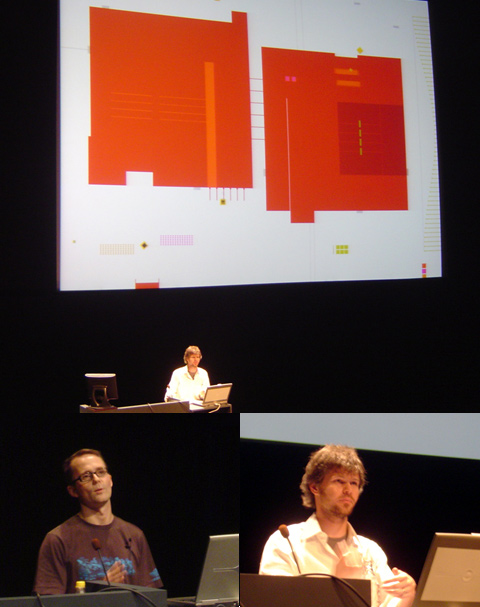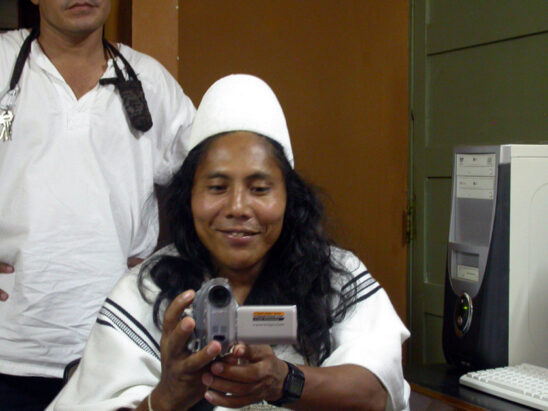A short summary of the lectures Casey Reas and Marius Watz at Lume Media Centre, an event which was organised by PixelACHE & friends (see earlier posting).

Marius Watz (on the left) and Casey Reas (Photos: Jokko Korhonen)
Casey and Marius arrived to Helsinki straight from the Generator.x conference / exhibition in Oslo, an ambitious project initiated by Marius Watz. Generator.x brought together an international group of artists / designers / researchers to explore ‘the current role of software and generative strategies in art and design’.
Marius quoted the definition of generative art from Philip Galanter:
Generative art refers to any art practice where the artist uses a system, such as a set of natural language rules, a computer program, a machine, or other procedural invention, which is set into motion with some degree of autonomy contributing to or resulting in a completed work of art.
(here is the academic paper where the quote is from)
Another relevant quote from Generator.x:
True literacy means being able to both read and write. If to use pre-existing software is to “read” digital media, then programming is the equivalent to writing. The Generator.x project focuses on artists and designers who embrace this new literacy not as a technical obstacle, but as a way to redefine the tools and the media they work in.
This is a slightly modified version of an original statement from Alan Kay:
The ability to ‘read’ a medium means you can access materials and tools created by others. The ability to ‘write’ in a medium means you can generate materials and tools for others. You must have both to be literate. In print writing, the tools you generate are rhetorical; they demonstrate and convince. In computer writing, the tools you generate are processes; they simulate and decide.
